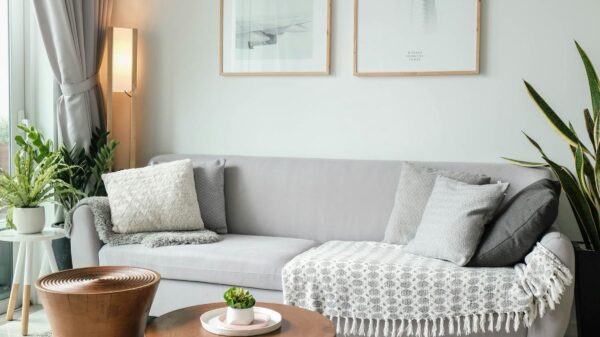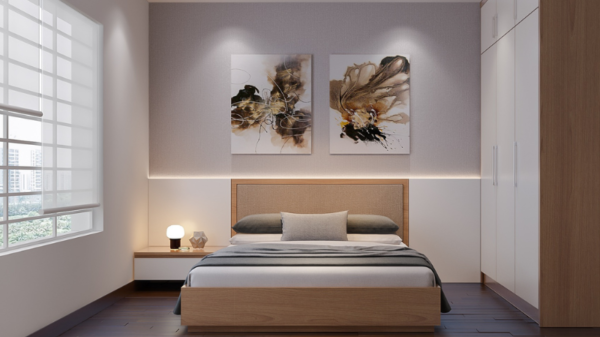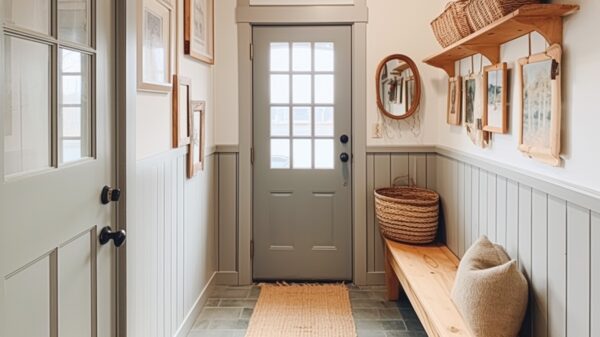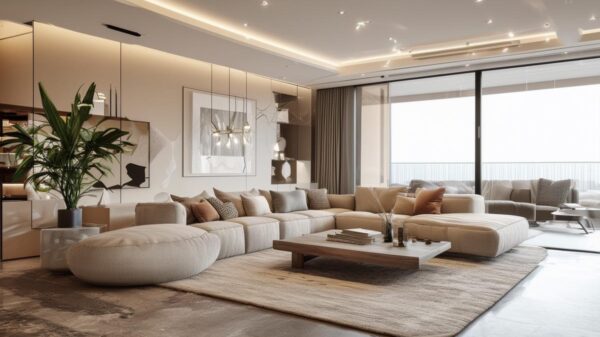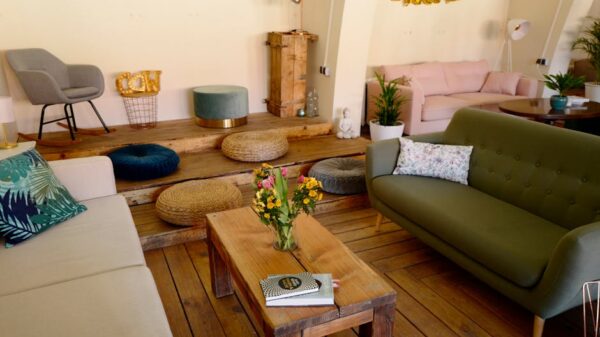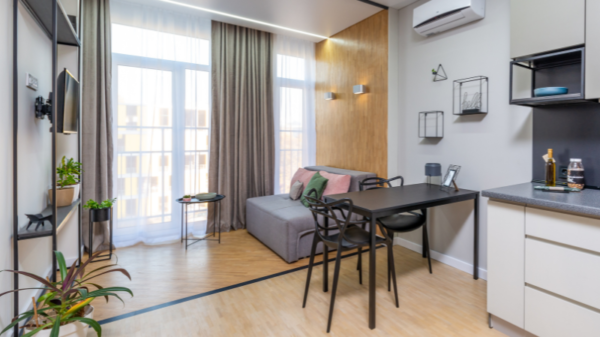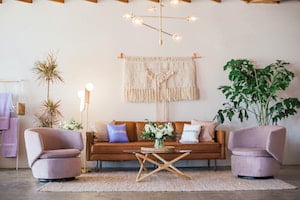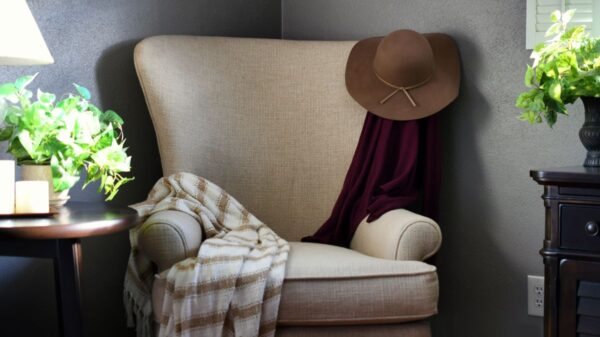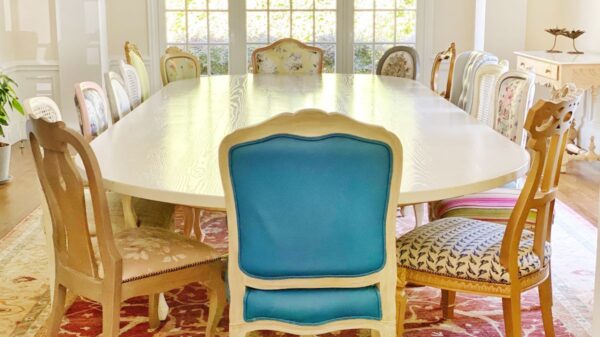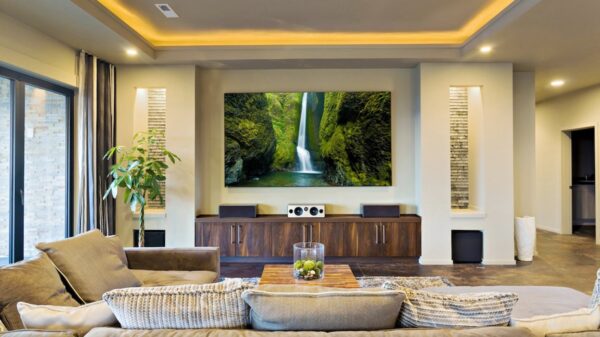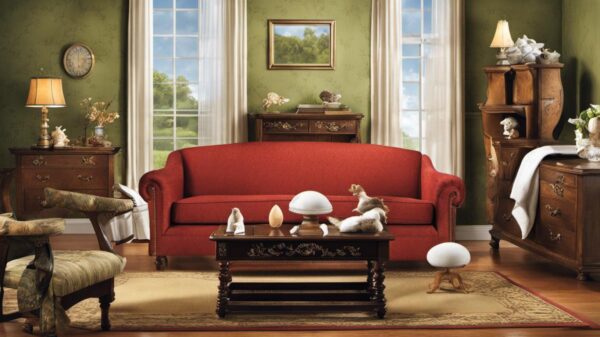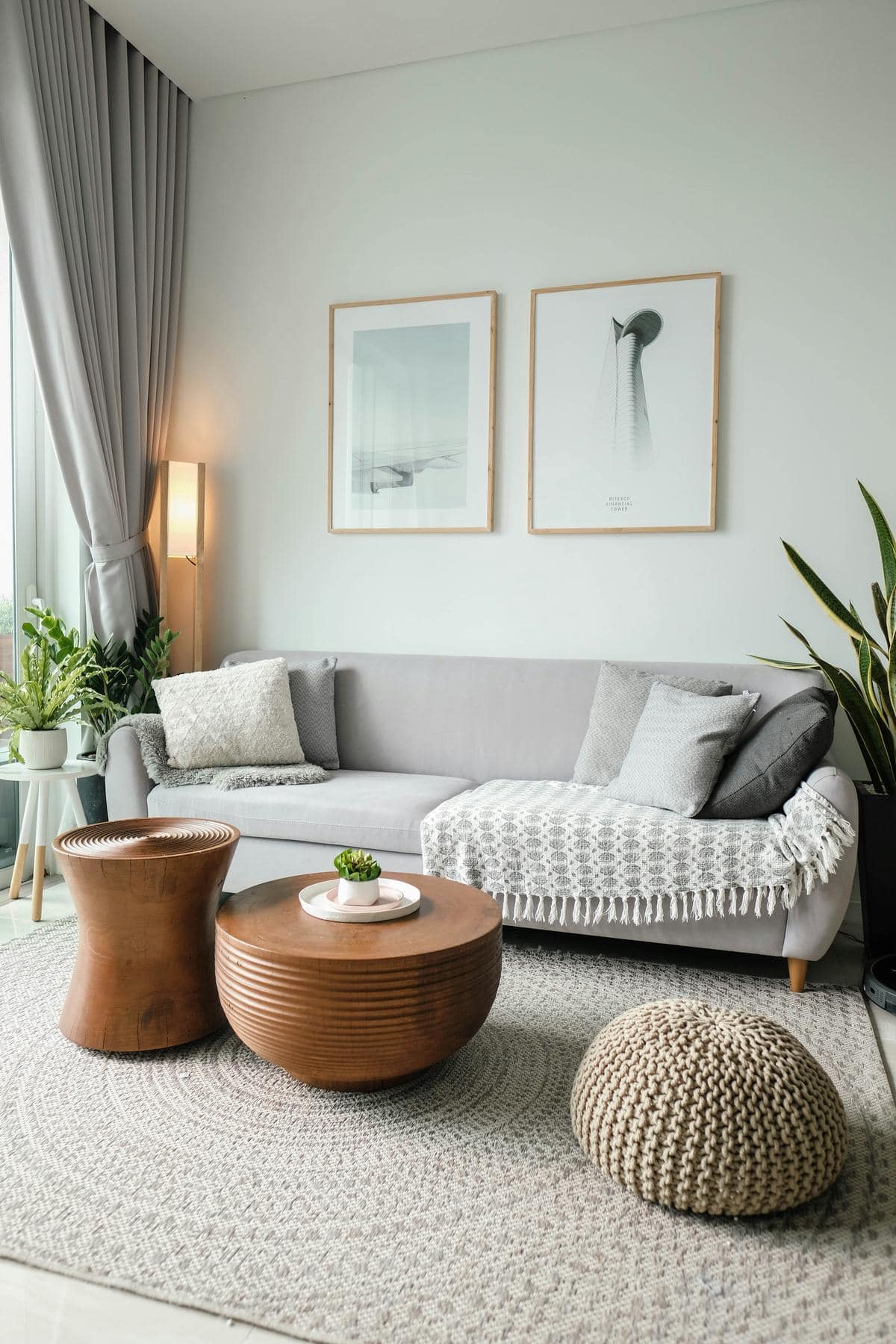Home Furniture On a Budget
1. Leverage Big-Box Retailers
Shop at major retailers like IKEA, Target, and Walmart for budget-friendly furniture that doesn’t compromise on style. These stores regularly stock a wide variety of pieces that cater to different design aesthetics. They often offer reasonably priced versions of high-end trends, making it easier to furnish your home without breaking the bank.
Look out for sales and clearance items, as big-box retailers frequently run promotions, especially during holidays and at the end of seasons. Signing up for their newsletters or downloading their apps can give you a heads-up on upcoming deals.
Consider their house brands, which often offer furniture that balances cost and quality, providing trendy options at lower prices. These in-house lines frequently emulate more expensive styles, giving your home a high-end feel without the accompanying price tag.
Take advantage of assembly options. While IKEA is famous for its DIY furniture, many items come with straightforward instructions and can be easily assembled at home, saving costs associated with pre-assembled furniture. If DIY isn’t your style, some stores offer affordable assembly services at checkout.
Explore financing options, as these retailers often have policies that allow you to pay for your furniture in installments, usually interest-free if paid off within a set period. This approach can make even larger purchases manageable on a tight budget.

2. Shop Secondhand for Budget Home Furniture
Explore thrift stores, flea markets, and online marketplaces to discover unique, pre-loved furniture that won’t stretch your budget. Embracing secondhand furniture not only gives you access to vintage designs that add character to your home but also supports sustainable practices by recycling and reusing.
Visit physical thrift stores and antique shops to get a real feel for the pieces. Often, furniture here might require some refurbishing, but this can be a satisfying DIY project that adds a personal touch to your space. Look for solid wood furniture, which is generally durable and can be easily restored.
Check out online platforms like eBay, Craigslist, or Facebook Marketplace, where deals are plentiful and negotiation is part of the process. Always review item descriptions for details on the condition, and ask for more photos or information if necessary before making a purchase. When possible, opt for local pick-up to save on shipping fees and assess the furniture in person before finalizing the deal.
Let your creativity shine by envisioning how each piece could be transformed. Whether by a simple coat of paint, new upholstery, or a structural modification, each update can turn a secondhand piece into a statement item reflective of your style.
Invest in quality, not quantity. While thrifting can be very economical, it’s important to choose furniture that offers both form and functionality. Take the time to research, inspect for high-quality construction, and negotiate without rushing to buy. This deliberate approach ensures that the items you bring home will serve you well and beautify your space without sacrificing comfort and performance.
3. DIY Furniture Projects
Unleash your creativity and frugality with DIY furniture projects, a rewarding way to personalize your space without spending a fortune. Crafting furniture yourself allows you to create pieces that speak directly to your tastes and fit your needs perfectly. Here are some effective ways you can dive into DIY furniture endeavors:
- Begin with Simple Modifications: Start off with straightforward projects that can vastly improve the appearance and utility of existing or basic pieces. Replace hardware on dressers, cabinets, or side tables with new knobs and pulls for an instant update. Or, apply adhesive contact paper in various patterns to revamp tabletops and shelf surfaces.
- Reimagine with Paint: Transform drab furniture into fabulous with a fresh coat of paint. Explore techniques like distressing, stenciling, or sponge painting to add texture and uniqueness. Colors can completely redefine a piece, so consider bold choices that elevate your room’s palette.
- Construct from Scratch: If you’re ready for a challenge, start building simple pieces from raw materials. Begin with something manageable, such as a wooden bench or a basic bookshelf. Gathering supplies from local hardware stores and using easy-to-follow online plans can help guide your project from concept to completion.
- Incorporate Repurposed Materials: Keep an eye out for discarded items that can be transformed into beautiful furniture. Old doors can be turned into desks or coffee tables; window frames can evolve into artistic photo displays. These repurposed projects are environmentally friendly and serve as exceptional, eye-catching pieces in your home.
- Customize Upholstery: Change the fabric on chairs or couches to refresh their look or to match a new décor scheme. This can dramatically alter their impact in the space, providing you with a custom design that feels luxurious and suited to your surroundings.
Investing time in DIY projects allows for comprehensive customization and offers a fulfilling sense of achievement. Each finished piece isn’t just furniture—it’s a testament to your ingenuity and hard work, instilling a greater sense of appreciation and connection to your space.
4. Opt for Multi-Functional Budget Home Furniture Pieces
Explore the world of multi-functional furniture to make the most of your living spaces, especially when square footage is at a premium. These ingenious pieces serve double or even triple duty, providing high utility while occupying minimal room, making them ideal solutions for budget-minded and space-conscious designers. Here’s how to efficiently incorporate multi-functional furniture into your home:
- Choose Convertible Sofas: Sofabeds or daybeds offer a practical solution for smaller apartments or guest rooms. They function as cozy sitting areas during the day and transform into comfortable beds at night. Options with storage compartments underneath can store bedding or other household items, keeping your space clutter-free.
- Invest in Extendable Dining Sets: An extendable table is perfect for those who enjoy hosting dinners but lack space for a large, permanent dining set. These tables can be compacted into smaller sizes for daily use and expanded to accommodate additional guests when needed.
- Select Lift-Top Coffee Tables: A lift-top coffee table not only provides a stable surface for your morning coffee but also includes hidden storage and a versatile work or dining surface. Lift the top when you need a laptop stand or a casual eating area, then easily lower it back for a traditional coffee table setup.
- Explore Vertical Storage Options: Consider bookshelves that offer adjustable heights and are equipped with anchors to attach safely to walls. Some even include fold-down desks or tables, ideal for turning any corner of your home into a temporary office space.
- Consider Nesting Pieces: Nesting tables and chairs are perfect for small spaces. These items can be spread out to increase surface area when needed and then neatly stacked or slid together to conserve space when not in use.
By selecting multi-functional furniture, you not only maximize the utility and flexibility of your living environment but also embrace a minimalist approach to consumption, ensuring each piece of furniture provides maximum value. This strategic choice supports a stylish, organized home life, ideal for modern, dynamic lifestyles where efficiency and practicality are prized.
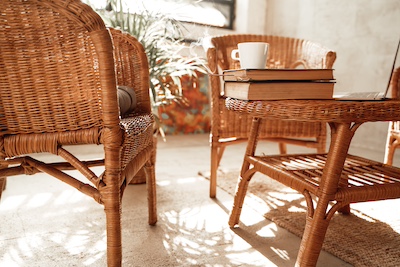
5. Wait for Sales and Discounts
Timing is everything when it comes to stretching your decorating dollars. Strategic shopping during major sales events can lead to substantial savings without compromising on quality. Here’s your guide to becoming a savvy furniture shopper focused on nabbing the best deals.
Identify the Big Sales Days: Furniture retailers typically slash prices during Presidents’ Day, Memorial Day, 4th of July, Labor Day, Black Friday, and Boxing Day. Mark these events on your calendar and prepare ahead of time by knowing exactly what you need.
Join Mailing Lists: Newsletters are often the first place sales are announced. Plus, many companies send exclusive coupons and invitation-only sale previews to their email subscribers.
Follow on Social Media: Keeping tabs on your favorite stores via social platforms can be especially beneficial. Brands might announce flash sales, contests or special discounts that aren’t necessarily available elsewhere.
Scan Websites for Banner Deals: Online furniture shops often highlight sales on their homepage banners. A quick daily check can help you catch new deals as they go live, especially limited-time promotions.
Consider End-of-Season Sales: As stores make room for new inventory, they reduce the prices of seasonal items significantly. Plan to make off-season purchases for some of the best deals.
Apply Price-Matching Policies: Some stores have price-matching guarantees and will honor a competitor’s lower price on the same item, so bring in or bookmark ads from other retailers to take advantage of these policies.
Utilize Discount Apps and Websites: Platforms like Honey or Rakuten offer plug-ins that automatically find and apply available coupon codes at checkout. Others provide cashback or discounts when you shop through their platforms, adding additional savings over store markdowns.
Learning to time your furniture purchases around sales and mastering the use of discounts not only saves you money but also contributes to a sustainable pattern of consumer behavior by reducing impulse buying. With planned approaches and sharp bargain-hunting skills, you’re all set to redefine the look of your home creatively and economically.
6. Choose Durable Materials
When furnishing your home on a budget, it pays to think long-term. Investing in furniture crafted from durable materials can enhance the longevity of your pieces, thereby offering greater value for your money over time.1 Here’s how to pick and make the most out of sturdy materials that not only withstand daily wear and tear but also adapt seamlessly to various home decor styles.
- Go for Hardwoods: Solid woods like oak, maple, and walnut are renowned for their strength and durability. Furniture made from these materials can handle the stress of everyday use while aging gracefully. Plus, their timeless appeal adapts well to changes in your home decor.
- Consider Metal Frames: Metal, particularly wrought iron or stainless steel, offers an exceptional lifespan for furniture frames, particularly in chairs, bed frames, and tables. These materials resist warping and bending and maintain their structural integrity over years of use.
- Opt for High-Quality Veneers: If solid wood is out of your budget, look for items with high-quality veneers over solid core panels. These provide the visual appeal of solid wood but at a more accessible price point, without significant sacrifice on durability.
- Choose Leather Upholstery: Leather sofas or chairs are wise investments. Not only is leather timeless in style, but it is also quite resistant to spills and scratches, requiring minimal maintenance as it ages into a rich patina.
- Select Synthetic Fabrics for Soft Furnishings: For upholstered items like sofas and chairs, fabrics made from engineered materials can be durable choices. Look for terms like acrylic, polyester, and microfiber—these materials resist stains and fading significantly better than some natural fibers.
- Invest in Tempered Glass: For coffee tables or dining tables, consider tempered glass. This material has been treated to be much tougher than regular glass, making it much less likely to crack or break, ensuring it holds up well under daily use.
By selecting furniture made from durable materials, you ensure prolonged usability and resilience against daily wear and create a consistently stylish and inviting atmosphere over years of use. Remember to touch these materials in stores to get a feel for them and check online reviews to confirm their longevity in real-life conditions. This thoughtful approach saves you money in the long run and supports sustainable living by minimizing waste.
7. Embrace Minimalist Budget Home Furniture Design
Minimalist design focuses on simplicity, decluttering living spaces, and reducing home maintenance efforts. This design philosophy can be economically savvy and visually striking, providing long-term benefits to your home and lifestyle.
Minimalism emphasizes owning fewer, high-quality items that are functional and aesthetically pleasing. This often means investing in well-made, classic pieces that won’t go out of style quickly, reducing the need for frequent replacements and updates.
By reducing the quantity of furniture and decor items, your shopping process becomes streamlined and less overwhelming. You’re more likely to carefully consider each purchase, focusing on finding pieces that truly fit your needs and blend harmoniously with other elements in your home.
Minimalist designs rely on uncluttered and well-organized environments, making rooms feel more spacious and open without the need for additional square footage. This is especially beneficial in smaller homes or apartments where maximizing space is critical.
Fewer decor elements mean less to clean and maintain, saving time and reducing home upkeep costs. A minimalist approach also limits areas where dust and clutter could accumulate, keeping your home neat and presentable with minimal effort.
Minimalist interiors are not tied to specific trends or eras, giving them a timeless look that remains stylish year after year. With neutral color schemes and simple, clean lines, minimalist designs resist the whims of passing fashions, ensuring your home always feels contemporary and refreshed.
By embracing minimalist design, you create a tranquil and orderly home environment while championing a lifestyle that values sustainability and thoughtful consumption. This decor style proves that being economical doesn’t compromise elegance, offering a smart, sophisticated way to outfit your home for both immediate enjoyment and future benefit.
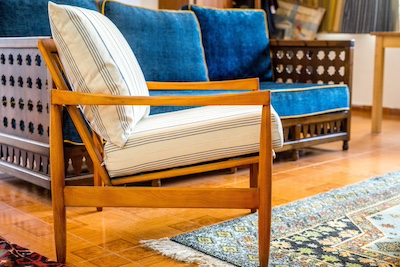
8. Use Paint & Textiles to Refresh Old Furniture
Transforming old furniture into appealing and functional pieces rejuvenates both your space and the items within it. Here are ingenious ways to update your old furniture using paint and textiles.
- Paint: A fresh coat of paint can renew old furniture. Choose latex or chalk paint for smooth application and a modern matte finish on wooden items. Bold hues like teal or mustard can add a vibrant pop, while pastel shades or neutrals such as beige, cream, and light gray create a more refined aesthetic. Techniques such as distressing, adding a wash of color, or implementing an ombré effect can introduce depth and artistic flair to your pieces.
- Reupholster: Covering seat cushions with new fabric is a straightforward way to modernize dining chairs or an old couch. Opt for high-performance fabrics in lively patterns textured linens or velvet in muted tones for a touch of sophistication. Simple slipcovers can dramatically change the look of sofas and chairs without the permanence or expense of full upholstery jobs.
- Unconventional materials: Beyond traditional fabrics, explore unconventional materials for unique textural contrasts. A coffee table top covered with a patched-together collage of vintage fabric scraps can create a boho-chic appeal, while upholstered chairs dressed in grain sacks add a rustic farmhouse touch.
- Stencils: Stencils allow you to apply intricate designs to tabletops, sideboards, or dresser drawers. This technique adds detailed patterns, floral motifs, or even text effects using a stencil and spray paint or a small roller. The precision and symmetry attained through stenciling can mimic high-end inlaid designs.
- Textile arts: Intertwine various textile arts into furniture for fresh takes. Macrame-wrapped chair backs or crochet-covered cabinet knobs add texture and warmth. Quilted sections on drawer fronts or a headboard upholstered with patchworked fabric pieces provide personalized tactile appeal.
- Whitewashing and dry brushing: Whitewashing wooden furniture involves thinning white paint with water and applying it lightly, allowing the wood grain to show through. Dry brushing uses minimal paint on a dry brush to create a soft, textured look that highlights edges and details.
Through these creative endeavors using paint and textiles, your old furniture can take on new character and functionality. This practice embellishes your living spaces and aligns with eco-friendly habits by reducing waste and extending the life of your decor.
9. Blend High and Low-End Pieces
Creating an elegant and personality-rich home doesn’t necessitate a wallet-busting spree at high-end boutiques. Blending high and low-end furniture can result in a dynamic and thoughtful interior design that reflects your personal style without going over budget. Here’s how to artfully mix luxury items and budget-friendly finds to form a balanced and beautiful living space:
- Invest in a focal point: Every room benefits from a focal point. Consider investing in one high-end piece, such as an opulent leather sofa for the living room or a stately dining table. This piece should embody exceptional quality and design, serving as the cornerstone around which the rest of the interior will orbit.
- Fill in with cost-effective options: Fill in the gaps with more cost-effective options, such as side tables, bookcases, or accent chairs from thrift stores or mainstream retailers. Focus on items that complement the luxury centerpiece in both color and style to ensure the overall design feels cohesive.
- Embrace flexibility: One of the benefits of this approach is the flexibility it affords. Start with what you can truly afford now and plan to gradually replace these pieces with more refined choices. This method staggers your spending and allows room for your style to evolve.
- Maintain consistency: When combining high-end pieces with budget finds, maintain consistency through design elements such as color palette, material, or style. A luxurious marble coffee table can look at home beside a simple, well-made sofa in a complementary color. It’s the harmony in the design choices that will make the disparate pieces work together visually.
- Accessorize strategically: Often, what really ties a room together are the accessories and smaller decor items. Splurge a little on a few luxe items like high-quality throw pillows, elegant lamps, or artisan vases—these can make even the more modest furnishings feel upscale. Spacious markets and second-hand stores can be treasure troves of unique decor that gives depth and personality to a space without the hefty price tag.
- Mix art pieces: Both affordable prints and pricier original pieces can coexist beautifully in the same space. Art is exceptionally subjective and evocative, making it the perfect medium to blend high and low-end pieces without clearly discerning their origins in terms of cost. Grouping artwork on a gallery wall with varying frames is a significant way to unify the pieces and add luxury to a room.
By adopting this approach, skilled decorators harness the ability to present a stylish, aspirational home environment purposefully curated over time. This strategy asserts your personal taste and exemplifies a prudent and sustainable approach to interior design—proving that good taste doesn’t necessarily come with a hefty price tag.
10. Plan and Prioritize Budget Home Furniture Purchases
When designing or refreshing your living space, it’s tempting to dive headfirst into the sea of sales and shiny new items. Yet, impulse buys often lead to a hodgepodge of mismatched decor that tells a confusing story about your home’s style. Avoid this common pitfall by taking the time to assess your current and future needs, weighing what pieces will serve you best over the long haul. This applies to both landmark purchases and smaller accents and functional elements.
Start with a brainstorming session. Consider the mood you envision for your space, the color scheme you’re drawn to, and the must-have pieces. Once you’ve identified these aspects, create a wishlist or mood board. This visual plan pinpoints what you’re looking for and guards against buying on a whim.
Next, prioritize based on necessity and usage. Identify key foundational pieces, such as a comfortable and stylish sofa or a well-structured desk for your home office. These deserve your budget’s focus before all else.
Consider the space you’re working with. Scale is crucial—oversized furniture in tight quarters is as awkward as small items in a vast room. Measure your space; dimensions help guide your selections harmoniously.1
Planning also extends to budget management. With a clearer visualization of your needs and wants, distribute your spending accordingly. Opt for higher-quality essentials that need to stand the test of time, while allowing some budget shifts for accent pieces you might rotate as trends evolve or your tastes change.
Keep an eye on the timing of purchases. Furniture sales are seasonal, so patience often pays dividends. Buying off-season can result in deep discounts on typical high-ticket items.2 Knowing when to buy is almost as vital as knowing what to buy.
Finding Budget Home Furniture for Your Home
Set your furniture shopping compass to ‘plan and prioritize’ mode—it’s less about short-term gratification and more about charting a path to a balanced, beautiful home that brings joy and functionality, perfectly suited to you without derailing your budget. While impulsive purchases might thrill momentarily, the satisfaction gleaned from thoughtfully furnished spaces lasts much longer.


